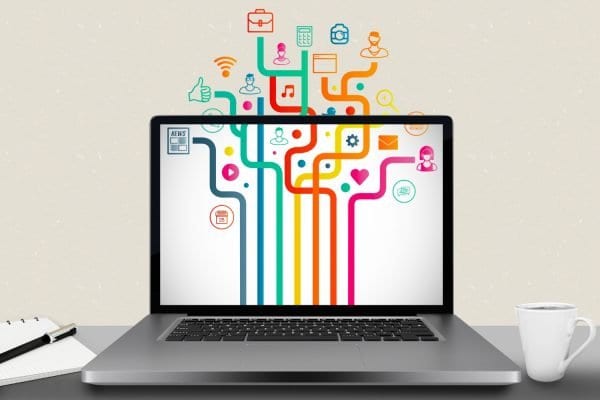Working from home has become increasingly common over the past year due to the COVID-19 pandemic. While there are many benefits to working from homes, such as increased flexibility and the ability to avoid commuting, there are also some challenges. One of the biggest challenges is ensuring that you have reliable equipment to be productive and efficient.
Using reliable equipment is important because it helps to minimize disruptions and downtime. When your equipment is unreliable, it can be frustrating to constantly deal with issues such as slow performance, connectivity issues, or hardware failures. These problems can take up valuable time that could be spent on more important tasks, and they can also be stressful and frustrating to deal with.
To ensure that you have reliable equipment when working remotely, it’s important to invest in the top 12 pieces of equipment needed to work from home. This may involve purchasing a new computer, upgrading your existing one, and investing in other important equipment, such as a reliable internet connection and a comfortable office chair.
Another important consideration is to make sure that you properly maintain your equipment. This may involve regular updates, software upgrades, and cleaning and troubleshooting of any issues.
Here are the top 12 pieces of equipment you’ll need to work effectively from home:

Top 12 Equipment Needed to Work from Home
- A reliable computer
A reliable computer is essential as a productivity tool for working from home. Whether you need a desktop or a laptop, make sure you have a fast, efficient, and capable device handling the tasks you need to complete. If you are working with large files or running multiple programs simultaneously, consider investing in a more powerful computer with a faster processor and more RAM.
2. A good internet connection
A good internet connection is crucial for working from home. It allows you to connect with colleagues, access resources, and complete tasks online. Ensure you have a stable and fast internet connection to ensure smooth and efficient work. If your internet connection is slow or unreliable, consider upgrading your service or investing in a Wi-Fi extender to improve coverage.
3. A comfortable workspace
A comfortable workspace can help improve productivity and well-being while working from home. Consider setting up a dedicated home office or workspace with a comfortable chair and desk, good lighting, and minimal distractions. If you don’t have a separate room you can use as an office, try to find a quiet, well-lit area in your home to work.
4. A headset or microphone
A headset or microphone can help improve the quality of your online meetings and calls and make it easier to communicate with your team. Invest in a good-quality headset or microphone to ensure clear and seamless communication.
5. A printer
While many tasks can be completed digitally, a printer can still be useful for working from home. Consider investing in a reliable printer that can handle printing, scanning, and copying tasks as needed.
7. A second monitor
A second monitor can be useful for working from home. It allows you to multitask more efficiently and have more screen real estate for tasks such as coding, design, or research.
8. A webcam
A webcam can help with video conferences and online meetings, allowing you to connect with your team and clients face-to-face. Invest in a good quality webcam with a high resolution and clear audio.
10. A standing desk
A standing desk can be a helpful piece of equipment for working from home, as it allows you to vary your posture and reduce the risk of sitting for long periods. Consider investing in a standing desk or using a desk riser to create a standing workstation.
11. A noise-canceling headset
Live in a noisy environment or have trouble focusing on background noise. A noise-canceling headset can be a useful tool for blocking distractions and improving concentration.
12. A document scanner
A document scanner can be useful for digitizing paper documents, allowing you to store and access them electronically easily. Consider investing in a portable scanner that you can use to scan documents from anywhere in your home.

What Do You Need in A Laptop to Work from Home?
When working from home, it’s important to have a reliable, powerful, and comfortable laptop for extended periods. Here are some key features to consider when shopping for a laptop for work from home:
Processor: Look for a laptop with a fast and powerful processor, such as an Intel Core i5 or i7 or an AMD Ryzen 5 or 7. This will ensure that your laptop can handle multiple tasks and applications without slowing down.
Memory: Make sure the laptop has enough RAM (random access memory) to support your workload. 8GB is a good minimum, but 16GB or more is ideal for heavy multitasking or demanding applications.
Storage: Consider a solid-state drive (SSD) laptop for faster boot and load times and enough storage space to store your files and documents. A 256GB or 512GB SSD should be sufficient for most users, but consider a larger capacity if you have a lot of large files or need to store a large media library.
Display: A good display is important for comfort and productivity when working from home. Look for a laptop with a high-resolution display, good viewing angles, and good color accuracy. A larger display can also be helpful for multitasking or working with multiple applications at once.
Keyboard and touchpad: A comfortable, responsive keyboard and touchpad are important for long work sessions. Look for a laptop with a backlit keyboard and a large, smooth touchpad for easy navigation.
Battery life: When working from home, you may not always have easy access to a power outlet. Look for a laptop with good battery life to ensure that you can stay productive even when you’re on the go.
Portability: If you need to take your laptop with you when you travel, consider a lightweight, compact laptop that is easy to carry.
Price: Finally, consider your budget when shopping for a laptop for work from home. There are many good options at various price points, so you can find something that meets your needs and fits your budget.
8 Common Challenges of Working Remotely and Their Solutions
What Are the Top 3 WFH Accessories You Need?
Here are the top 3 work from home accessories that can help make your remote work experience more efficient and comfortable:
A good quality headset: A headset with a microphone is essential for clear communication during conference calls and video meetings. Look for a headset with noise-canceling capabilities to reduce background noise and ensure your voice is heard clearly.
A standing desk or adjustable desk: Working from home can sometimes mean spending long hours sitting at a desk, which can lead to discomfort and potential health issues. A standing desk or an adjustable desk that allows you to switch between sitting and standing can help improve your posture and reduce the risk of discomfort and injury.
A good quality webcam: If you need to participate in video meetings, a good quality webcam is essential for a clear and crisp video. Look for a webcam with a high resolution and a wide-angle lens to ensure you look your best on camera.
In addition to these accessories, it’s also important to have a comfortable chair, good lighting, and a stable internet connection to ensure a productive and comfortable work-from-home experience.
Which Tools Are Most Useful to Remote Employees and Coworkers?

Many tools can be helpful for remote employees and coworkers to stay connected and collaborate effectively. Here are some common tools that are useful for remote work:
Video conferencing software: Video conferencing software such as Zoom, Skype, or Google Meet allows you to participate in virtual meetings and conference calls. These tools also often have features such as screen sharing, which can be helpful for presentations or collaborating on documents.
Project management software: Asana, Trello, or Monday.com can help you stay organized and on track with your tasks and projects. These tools allow you to create to-do lists, assign tasks to team members, and track progress.
Collaboration and document sharing tools: Tools such as Google Drive, Dropbox, or OneDrive allow you to share and collaborate on documents with your team in real time. These tools also allow you to access and edit documents from any device.
Communication tools: Communication tools such as Slack, Microsoft Teams, or Google Hangouts allow you to stay connected with your team and have real-time conversations. These tools often have features such as file sharing and video conferencing, which can be helpful for collaboration.
Time tracking software: Time tracking software such as Toggl or Clockify can be helpful for remote employees to track their time and bill clients accurately. These tools can also help you stay on track with your work and identify areas where you may be able to increase productivity.
These tools allow remote employees and coworkers to stay connected and collaborate effectively, even when they are not in the same physical location.
Top 11 Productivity App For Remote Workers
What Is the Best Setup for Working from Home?
The best setup for working from home will depend on your specific needs and preferences and the nature of your work. Here are some key factors to consider when setting up a home office:
Ergonomics: It’s important to have a comfortable and ergonomic workspace to help you work efficiently and avoid discomfort or injury. This includes a desk and chair with the right height for you and good lighting and ventilation.
Equipment: Ensure you have all the equipment you need for your work, including a computer, internet connection, headset, and other specialized equipment.
Workspace location: Choose a location for your workspace that is quiet, well-lit, and free from distractions. Consider factors such as the level of natural light, access to outlets, and proximity to other household noise.
Organization: Keep your workspace organized and clutter-free to help you stay focused and productive. This may include using organizers or storage solutions to keep your desk tidy.
Personalization: Make your workspace your own by adding personal touches such as plants, artwork, or pictures. This can help make your home office feel more welcoming and comfortable.
Considering these factors, you can create a home office setup that works for you and helps you be productive and comfortable while working from home.
Final Thought
A reliable computer is one of the most important pieces of equipments for working from home. Depending on your needs and preferences, this may be a desktop or a laptop. When choosing a computer, it’s important to consider factors such as processing power, storage capacity, and connectivity options. Investing in a high-quality monitor is also a good idea, which can help reduce eye strain and improve productivity.
Another important piece of equipment is a reliable internet connection. Working from home often requires internet access to communicate with colleagues, access important documents and resources, and complete tasks. A slow or unreliable internet connection can significantly hinder productivity, so investing in a quality connection that meets your needs is important.
Other important equipment for working from home may include:
- A comfortable office chair.
- A good-quality headset or microphone for conference calls and video meetings.
- A printer or scanner.
Depending on your specific needs, you may consider investing in other equipment, such as a standing desk, a whiteboard or dry-erase board, or a high-quality webcam.





